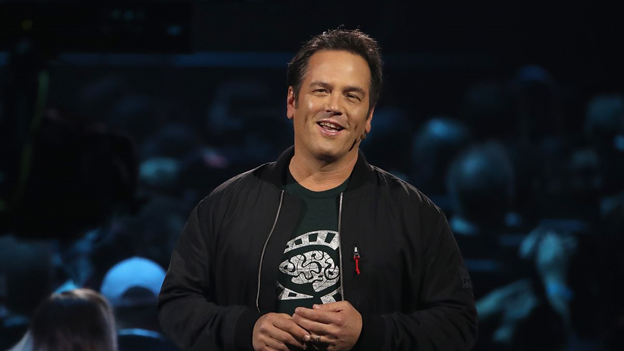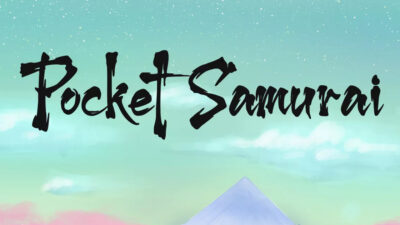There are things that stalk the streets and back alleys at night. They meet in the dark corners of bars and boardrooms. They are often well-dressed, but not in a way that makes it seem like their wife didn’t have some input. They make decisions, decisions that change industries and upheave the lives of the people below them. They are vampires, and even though VAMPYR came out last year and VAMPIRE: THE MASQUERADE-BLOODLINES 2 doesn’t come out ‘til next year, they descended upon Los Angeles and E3 for blood.
June spells summer time, but for those so inclined (the long-suffering press, long-suffering game developers, people willing to drop close to a thousand dollars to wait in line), June also means the Electronic Entertainment Expo, a business convention/collection of press conferences/now consumer-facing fan event that sets the tone of the video game industry for another year and gives some kind of indication of what all the major players have on the docket for the next few months. Or at least on paper that’s the idea. As games have diversified (slowly but surely) and gotten longer and more complex, having trailers and demos ready for a random week in June is a bigger and bigger ask. It’s great to get press in one place and audience’s eyes focused on one thing, but you can achieve much the same with your own glossy event/convention. This is part of the explanation for Sony’s absence at the convention this year (the other part, they have nothing to really announce other than they love ray tracing and SSDs), but also the general reduction in all companies’ participation. It’s just not as necessary anymore. Why play together when you can have so much more fun and make so much more money on your own? This mindset is the little bug in all executives’ heads (all capitalists’ heads?), so it makes sense that this would be the year that the wheels start turning around game streaming. A Netflix for games seems to be the goal. What little has been announced tells a different story. Let’s take a stroll through the moonlight, shall we?

The Stadia Controller, part of Google’s solution to game streaming
E3 started early this year with Google’s Stadia Connect, technically a separate event run by the tech giant but one whose purpose was to overshadow everything following. Google detailed their platform for streaming and developing games. Games available instantaneously from a link in a YouTube video (thought not at launch), guides and walkthroughs delivered with a simple query to Google Assistant (thought not at launch), and PC-quality games and graphics playable without an expensive console (1080p and 60FPS with only a Chromecast and controller required). It sounds…fine! Maybe incredibly hampered by technology (Google has some buzzy explanation about servers and the controller connecting directly to WiFi to reduce lag, but that remains to be seen), but not dissimilar to other services that have come before it (OnLive, you were a real one).
The rub comes with the actual business model. Google intends to offer a separate subscription called “Stadia Pro” at $9.99 a month. This gets you 4K resolution and at some point a catalogue of free games, but as of right now only includes DESTINY 2: THE COLLECTION (a game on which my thoughts have long been expressed). Next year Google plans to offer Stadia Base for free, but regardless, to play at launch you have to join Stadia Pro and to play at all you need to buy each individual game. This is not exactly the solution everyone was itching for. Not a Netflix, not yet a failure, but just kind of meh.
Knowing that Microsoft also had a streaming project in the works (it’s called xCloud, because who cares about names anyways) and that Phil Spencer, Head of Xbox, loves games and loves you and I, dear reader, specifically, I was expecting the Xbox press conference to comfort me with news of a better, friendlier, more logical streaming platform. Anyone expecting this did not have their expectations met.The big xCloud news out of E3 was that console streaming would be incorporated into the service (much like Playstation’s Remote Play feature) and that a public test of everything xCloud has to offer would come in October.
The logic of this is simple for Microsoft. xCloud is quite literally an Xbox in the cloud, specced parts-wise to their current Xbox One S, that a subscriber can access from their phone, television, or other internet connected screen. Allowing streaming directly from a gamer’s console follows the same kind of logic: you own your own mini-server. This becomes more promising with the other big announcement, the company’s next console, Project Scarlett. A box that does realtime ray tracing (high fidelity realistic lighting), has an SSD for faster load times, and features a processor four times as fast as the current high-end Xbox One X. What neither of these are is a firm plan as to how this will be priced and how it will impact users’ separate internet bill. In many ways Microsoft is already starting from a better place by having a download-only game subscription in GamePass, but having nothing to counter Google’s plans is disappointing. Especially as a self-styled steward and curator of games.

Xbox Dad announcing that he loves games, loves you, will still probably need you to pay $9.99 a month.
But maybe the whole idea is disappointing. The thrill of game streaming and game subscriptions is the fusion of convenience and value. Consoles are expensive and games are expensive, getting away without having to pay for either while still enjoying all your favorite games is great. But it’s not that you’re not paying, is it? Because paying monthly is cheaper in the short term, yes, even vital for those of us who live paycheck-to-paycheck, but it almost always ends with you paying more than you intended. Game streaming, much like video streaming and music streaming, doesn’t exist because consumers demanded it. It exists because large corporations needed a way to make more money at a potentially even lower cost to them. Games and the consoles that run them didn’t get more expensive to make because visual fidelity was something most gamers demanded, but rather because companies needed another bullet point to differentiate their games, another reason to sell more consoles. All business knows is growth. That new money isn’t being shared with marginalized developers, it’s not being passed onto the consumer through free services and innovative new ways to play, it’s pocketed. When the Queen of the Damned wants blood, she gets blood. Game streaming, expansion passes and cosmetics are just another way to get the goods.
There’s nothing inherently wrong with the convenience these kinds of services provide, but convenience almost always comes with a cost. The difference between a world where many of the necessary things we need or want (housing, food, healthcare, transportation, entertainment) are easily accessible and provided at low-to-no cost and our service-riddled present is who actually pays for it. Will it be our government by taxing a rich upper class? A business more equally distributing its profits among its employees? Or will it be us, through an ever increasing number of $9.99s and $14.99s and $99s a year? An arrangement, by the way, that offers us none of the benefits of ownership, and in many cases, the full quality of a product or service. This is why game streaming is a cool idea only on the surface. It’s an invitation really, and to agree to pay, whether monthly or for individual games, is to give up and give in.

An illustration of a technology you’ll never see the advantage of because of how cost prohibitive it would be to install
There’s an important term in the telecommunication industry known as “the last mile.” It describes the distance between the high-tech, easy-to-upgrade infrastructure that exists on the street and a paying customer’s home. This can be the difference between high-speed fiber optic cable run under a residential street and literal copper wire that connects it to a customer’s phone and internet modem. Crossing the last mile is expensive and difficult.It requires uprooting homes, digging tunnels, and replacing technology that communities have been relying on for decades. It’s a major problem for a product like game streaming, whose dependency on high-speed internet to function can be hard to achieve depending on the quality of the tech crossing that last mile.
But I’d argue there’s another kind of last mile, one that’s psychological and philosophical, but still surrounded by eager companies looking to cross it. It describes the distance between the relative clarity of your own life, your wants and needs, your beliefs about yourself and the world, and the opaqueness of business and capital. It’s the distance that’s crossed when you accidentally describe the things you watch on Netflix as “free,” when you install a smart assistant in your home, when you believe for just a second that a product is made with “magic” rather than the sweat and blood of hundreds or thousands of people. The last mile is the time before your mind is fully cannibalized by the companies who’d love for you to subscribe and save. It’s one of the last buffers you have. Game streaming is inviting the vampires across that last mile, across whatever ritualistic border that prevented them from coming inside, and into your home to drink your blood.
So what’s the solution? Neither Microsoft or Google have any intention of stopping, and Sony has expressed their desire to join them, so what’s the garlic or holy water in this situation? My proposal is something that existed before that was pushed out of the mainstream because of the popularity of home game consoles: arcades. But not the adult-oriented bar experiences that have become popular in recent years, something focused on the activity itself. Imagine a converted karaoke studio with individual sectioned-off rooms (available to rent) and some open spaces for playing games on consoles you might not own. Imagine this converted karaoke studio had a small curated library of games to rent and play out front. Imagine this business was actually a nonprofit, run by people who care and want to share their love of games. Imagine your “subscription” didn’t just benefit you (or in reality, the company licensing games to you) but many other people. That feels like an answer to this problem, that feels like crossing that last mile in the opposite direction, towards people and things you love.
















Comments